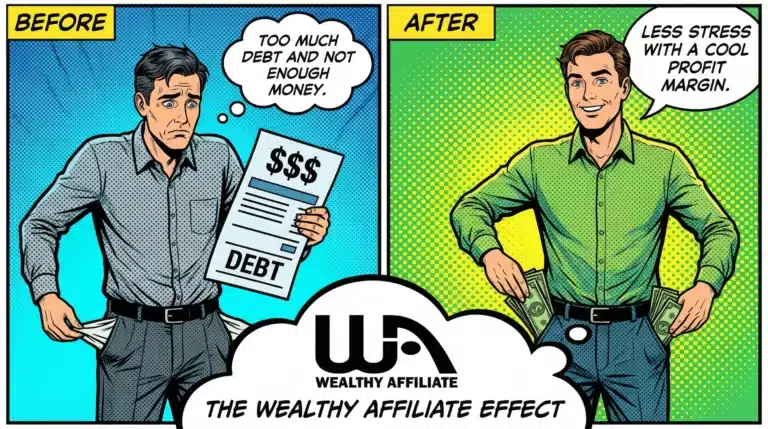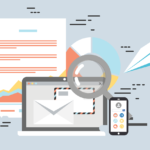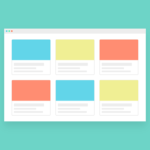I’m here to help you understand why email marketing could be a game-changer for your blog. It’s not just about blasting out newsletters; it’s about creating a personal connection with your readers.
Imagine having a direct line to your audience’s inbox, where your content gets the attention it deserves, away from the noise of social media. That’s the potential of a well-crafted email marketing campaign for bloggers.
Don’t worry too much about the technicalities at first. The beauty of email marketing lies in its scalability. You can start simple and evolve your strategy as your blog grows and your audience expands.
Now, you’re going to find out about the intertwining paths of blogging and email outreach. This relationship opens up a world of opportunities for engaging your followers and driving traffic back to your blog.
And that’s just the beginning. As we delve into the world of email marketing together, you’ll learn how to harness the full power of this platform to grow your blog beyond what you thought possible.

Understanding Your Audience: Segmentation and Personalization
A successful email marketing campaign hinges on how well you understand your audience. Tailoring your content to meet their needs and interests isn’t just good practice; it’s essential. That means diving into the nitty-gritty of segmentation and personalization.
Segmentation starts with dividing your audience into smaller groups based on shared characteristics. These could include factors like demographics, behavior on your blog, past purchase history, or how they found your blog in the first place. This strategy ensures your messages are relevant and resonate with each unique subscriber segment. After all, the email you send to a long-time follower might not hit home with a brand-new subscriber.
Personalization takes segmentation a step further. It’s about using the data you’ve collected to tailor your communication as if it were a one-on-one conversation. This could range from a simple “Hello, [First Name]” to content curated based on a subscriber’s interests or past interactions with your blog.
You’re going to find out about multiple techniques to collect data and sharpen your email marketing strategies. These include surveys, analyzing click-through rates, and monitoring which blog posts your subscribers engage with the most. Remember, the goal is to create a sense of connection and value, making your readers feel seen and understood, which in turn can foster loyalty and encourage engagement.
Crafting Compelling Content: The Heart of Your Email
Now, let’s talk about the core of your email: the content. Crafting compelling content is a little like cooking a signature dish; it needs the right mix of ingredients to tantalize the taste buds. In the case of email, you want to captivate your readers and keep them hungry for more.
First up, you’ve got to nail the subject line and preview text. Think of these as the appetizer; they set the expectations. A well-crafted subject line is your foot in the door. It’s what prompts your readers to click through and actually read the email. Pair it with an engaging preview text that acts as a compelling teaser to your main content.
The heart of your email is the story you tell and the value you provide. A personal anecdote that leads into a practical tip can work wonders. You’re not just sharing information; you’re building a connection. Also, remember to keep it relevant and actionable. If you promise five ways to simplify meal planning, deliver on that promise.
Content relevance is crucial for your click-through rates. When your readers find consistent value in your emails, they’ll look out for them, and your open rates will ascend. It’s about fostering trust, and every email is a brick in the foundation of the relationship you’re building. So, ensure that each message aligns with your reader’s interests and your blog’s brand.
After setting the table with inviting content, the next course involves aesthetics and user experience, which I’ll be talking about in the upcoming section. Good content matched with a responsive and appealing design is like a perfect dining experience that keeps patrons returning. In your case, it’s your subscribers eagerly awaiting your next email.

Optimizing Email Design and User Experience
I’m going to show you how the right design can make or break your email campaign. Visual appeal and user experience are non-negotiable in crafting emails that not only get opened but also read and acted upon.
First up, let’s talk about readability and engagement. You’ve got to make sure your email can be easily scanned by readers. Use subheadings, bullet points, and short paragraphs. And remember, white space is your friend – it makes your content much more digestible.
Let’s not forget mobile responsiveness. A huge chunk of emails are opened on smartphones and tablets, so if your email doesn’t look good on these devices, you’re in trouble. Choose an email template that’s responsive, so your content looks crisp on any screen, any size.
Incorporating appealing visuals like images, GIFs, or videos can amplify your message. But don’t overdo it – you’re aiming for that sweet spot where visuals complement your words without overwhelming the reader. Also, consider the loading time, because a slow email is often a deleted email.
With a beautifully designed email in place, your next step is to grow your subscriber list. I’ll help you understand the techniques to attract more sign-ups and how to practice email list-building in an ethical, subscriber-friendly way. Stay tuned for a lean and mean subscriber list that can’t wait to open your emails.
Growing Your Subscriber List: Techniques and Ethical Practices
You want to see your blog thrive, right? Well, having an expansive email subscriber list is like having a direct line to your audience’s inbox. But how do you grow this list without resorting to shady tactics? Let’s talk techniques.
For starters, you can always create high-quality, valuable content that naturally entices readers to sign up for more. A common strategy is offering an incentive, known as a lead magnet. This could be an exclusive eBook, a special tutorial, or a set of resources that provides something extra, in exchange for their email.
Don’t underestimate the power of simplicity, either. Make the sign-up process as easy as possible. A visible, accessible sign-up form on your blog is a must. You could include it at the end of each post or have a pop-up form (just ensure it’s not annoying).
It’s crucial to honor your reader’s trust. That means being transparent about what they’re signing up for and maintaining their privacy. Always include an opt-out option in your emails. Compliance with laws like GDPR isn’t just good practice; it’s mandatory.
Social proof can be incredibly persuasive as well. If you’ve helped others, show testimonials or case studies. People are more likely to join your list if they see others benefiting from your content.
Finally, cross-promotion can expand your reach. Partner with other bloggers or businesses to share each other’s content, including newsletters, which can introduce you to a larger or different audience.
Now, having a sizeable list is great, but what’s next? This is where automation tools step in to make your life easier and your marketing efforts more effective. Stick with me and we’ll explore the beautiful world of automation in the following section.
The Role of Automation in Email Marketing
Now what is a big publisher? If you’re envisioning someone who barely has time to breathe between writing and networking, you’re right on the money. That’s going to include many of you as well. But here’s the kicker: automation can change the way you manage your email marketing, turning it into a process that handles itself—well, almost.
I’m going to walk you through the nuts and bolts of email marketing automation. This isn’t just about saving you time; it’s also about increasing your effectiveness and scaling up your blogging ventures. Choose something that resonates with you, and let’s get to it.
Let’s start with an introduction to automation tools that I think are game-changers for bloggers. These include platforms like Aweber, ConvertKit, and ActiveCampaign. Each has its own strengths; for instance, Aweber is great for beginners, ConvertKit shines with automation features, and ActiveCampaign excels in email personalization and segmentation.
So my question to you today is, how does automation aid your email strategy? It simplifies tasks such as sending welcome emails to new subscribers, distributing your blog posts as newsletters, and segmenting users based on their behavior—which is crucial for personalization. On top of that, autoresponders can nurture your audiences even while you’re asleep.
Your first attempt doesn’t need to be your last. You can always adjust your approach down the road. Consider starting with basic automations, then experiment with more sophisticated sequences as you become more comfortable. Automation shouldn’t feel daunting—it’s here to support your growth.
This all feeds into the next section, where you’re going to find out about the tangible impact of email marketing on your bottom line. I’m talking about real-time data and ROI. Because at the end of the day, knowing what works—and what doesn’t—is crucial to making informed decisions for your blog.
Real-Time Data: Analyzing Email Marketing’s ROI
Understanding the effectiveness of your email marketing efforts is crucial to fine-tuning your strategy and ensuring a solid ROI. But you might wonder, how exactly can you track the success of your emails?
First off, let’s look at some key metrics you should be monitoring: open rates, click-through rates (CTR), conversion rates, and unsubscribe rates. These indicators give you a direct look into how your audience is interacting with your emails.
Imagine sending out an email campaign and, within hours, having actionable data at your fingertips. Real-time analytics allow you to see immediate subscriber responses. This quick feedback can help you pivot quickly if something isn’t working, or double down on what is.
Now, I’ve seen firsthand the impact email marketing can have on ROI. For bloggers, each email sent out can mean a direct increase in page views, affiliate clicks, or product sales. Studies have shown that for every dollar spent on email marketing, you can expect an average return of $42. That’s a staggering figure!
Moreover, integrating tools like UTM codes into your emails can provide you with a wealth of data on your subscribers’ behavior post-click. This means you can trace conversions back to specific email campaigns, allowing you to calculate your campaigns’ actual contribution to revenue.
In my opinion, the ability to adapt based on this real-time data is what sets successful email marketers apart from the rest. You’re not just shooting in the dark; you’re making informed decisions that propel your blog forward financially. And that’s a game-changer.
Transitioning seamlessly, what if you could improve these metrics even further? That brings us to the exciting world of A/B testing, which we’ll explore in the next section.

Advanced Techniques: A/B Testing and Beyond
Now, let’s take your email marketing skills to the next level. This isn’t just about sending out newsletters; it’s also about refining your approach to ensure each email gets better results than the last. That’s where A/B testing steps into the spotlight.
A/B testing, or split testing, is a fantastic method for figuring out what really clicks with your readers. You’re going to find out about testing different subject lines, email body copy, calls to action, and even send times to see what triggers the best audience response.
And it’s not solely about A/B testing; advanced segmentation can play a huge role too. This means not treating your subscriber list like a monolith but recognizing the diverse interests and behaviors within it. By creating hyper-targeted campaigns, you can speak directly to the nuances of your audience segments.
Incorporating dynamic content, which changes based on your subscribers’ preferences and past behaviors, can make your emails feel tailor-made. Picture an email that promotes a vegan recipe to a subscriber who’s shown interest in plant-based eating. Personalized, relevant, and far more likely to engage.
This nuanced, data-driven approach to email marketing sets the stage for sustainable growth, which I’ll be discussing next. With these advanced techniques, you’re not only seeing immediate effects but also laying the groundwork for a robust, enduring email marketing strategy.
Conclusion: Building a Sustainable Email Marketing Strategy
In this guide, we’ve navigated the ins and outs of email marketing tailored to you as a blogger. I’ve walked you through understanding your audience, crafting content that truly speaks to them, and the crucial elements of design and user experience. We’ve discussed the importance of growing your subscriber list with integrity and the incredible advantages automation can bring to your operations.
I’ve also shown you how to use real-time data to see the direct effect of your efforts on ROI, ensuring that every newsletter you send out is an investment in your blog’s future. Remember that email marketing isn’t just about sending emails; it’s about building relationships and delivering value to your audience consistently.
Your first attempt doesn’t need to be perfect. Email marketing is about learning and adapting. The strategies and tools we’ve discussed are here to help you, but they’re starting points. Don’t worry too much about getting everything right initially. You can always refine your approach based on the feedback and data you collect.
Choose methods that resonate with you and your readers. Be authentic in your communication, and don’t shirk from showing your unique voice. That’s going to include times when you need to adjust your course, and that’s okay. Stay true to the heart of your brand, and your readers will appreciate it.
Moving forward, I really hope that you harness the power of email marketing to create a robust channel that complements your blog. There’s a lot of opportunity to leverage insights to drive content creation, enhance reader engagement, and boost your online presence.
Remember, email marketing, just like blogging, is a marathon, not a sprint. In my opinion, it’s a rewarding journey that’s worth the effort. Thanks for reading, and I’m here to help you navigate this exciting terrain.






